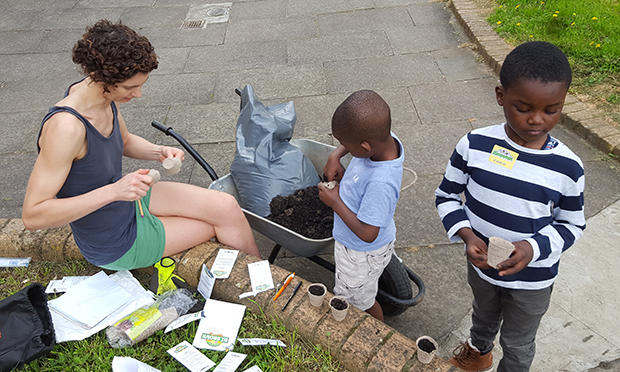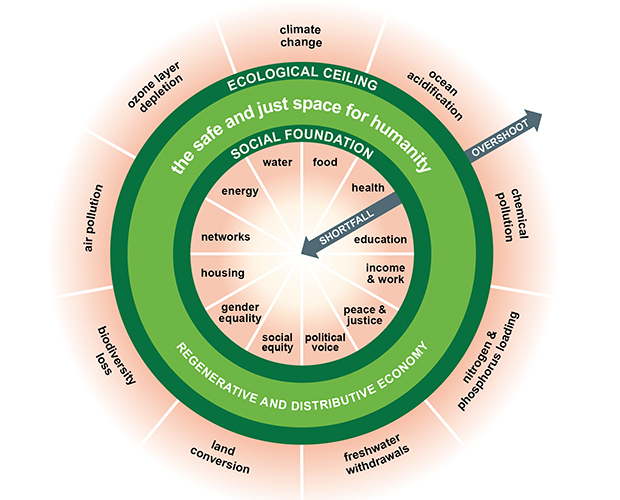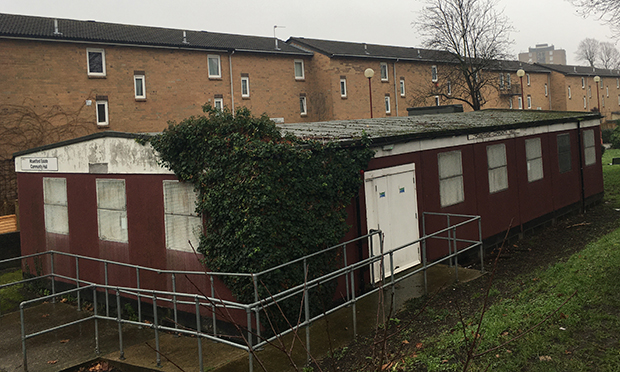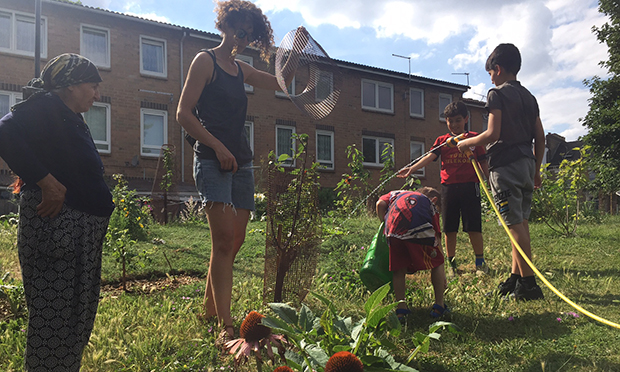A group of Hackney residents are using a doughnut to reinvigorate their community

Photograph: courtesy Rose Gibbs
Upon hearing the term ‘doughnut economics’, one’s mind would be forgiven for jumping to the cost of a box of the sugary treats, or to a vision of the police chief in The Simpsons single-handedly keeping Springfield’s bakery afloat.
But for a group of Hackney residents, it is the foundation for a new way of doing things, a blueprint for reimagining and safeguarding tight-knit communities that have become frayed by the pandemic and the years of austerity that came before.
The doughnut in this case is actually a model developed by English economist Kate Raworth which takes its name from the diagram she uses to illustrate it.
The inner hole features life’s 12 essentials – food, water, health, education, housing, and more – while outside the ring sit the planetary boundaries that must not be overshot if humanity is to survive – things like climate change, ozone layer depletion, biodiversity loss and air and chemical pollution.
To boil it down, or rather deep-fry it, the model invites people to judge the success of the economy by how well it meets people’s needs without killing the Earth.
The Doughnut Economics website describes it as a “mindset that’s fit for the 21st-century context and challenges”.

For Rose Gibbs, artist and founder of Mountford Growing Community, a group of socially-minded gardeners formed around an estate in Dalston, the principles of Raworth’s theory chimed well with an idea for a new project.
After hearing from young people on the estate lamenting the closure of youth clubs, Gibbs was given the go-ahead by the council to redesign a local community hall “not suited to their needs”.
To get the necessary plans in place, the group is running a crowdfunder that was recently given a huge boost when Mayor of London Sadiq Khan pledged £32,000. But it still has a little way to go to reach its £50k target by 11 May.
The concept, and here’s where Raworth’s mindset comes in, is to have young people from Hackney who are not in education, employment or training design and build the hall, learning architectural skills along the way – all with sustainability and the environment at the forefront.
The resulting building, the group hopes, will provide the entire local community with a long-standing asset that will benefit their health and wellbeing, strengthen social cohesion and improve civic engagement.
While Raworth’s doughnut offers a “guide to think about as the project unfolds”, Gibbs said the idea has been at the back of her mind since 2013, when she came across a real-world example of doughnut economics – years before Raworth fully mapped out her theory in a 2017 book.
Gibbs explained: “I went on an artist’s placement up to Bradford and Leeds. There I met an incredibly inspiring man, Claude Hopper Hendrickson, who had, in response to the lack of diversity within the construction industry, built a street of 12 houses with a group of unemployed Black men, learning the skills along the way so that by the end of the project the men not only had a share of a house, but also a whole new set of skills.
“I was really impressed by his work, both with this project and with subsequent community youth projects he has been involved in, and have written about him in order to share his good practice.
“Since learning about his project I have been really keen to do something similar, and find the right people and the right way to do a self-build like this.”
Gibbs set up Mountford Growing Community to “support community cohesion, reduce social isolation, provide access to fresh and affordable fruit and vegetables, facilitate residents having greater autonomy over their immediate environment and to encourage civic participation”.
It began with gardening but has since flourished into an organisation that enables locals to “start conversations with each other that might not otherwise happen”.

One of those conversations, Gibbs says, was with young people on the estate, who told her that the closure of so many youth clubs over the last 10 years had denied them a space to meet and socialise, and that the community hall was not fit for purpose.
She added: “There is a fitness trainer who lives on the estate and he had been doing an amazing job with the younger people, giving them football training, but he was frustrated that they didn’t have access to any of the kind of social spaces that he had growing up.
“So the impetus for the project and my wish to pursue it really came from speaking with the young people who live on the estate, and a desire to do something about the lack of social spaces for young people.”
Gibbs has enlisted Sahra Hersi to “lead the way”.
Hersi is a graduate of the Royal College of Art whose practice explores shared spaces, the public realm, collaboration and community engagement.
Gibbs has known Hersi for many years and is “completely thrilled she agreed to be part of this project”.
“I think what she will be able to do for the participants is make transparent the otherwise obscure and daunting process of becoming an architect. She will also be able to show all the career paths to which an architectural education can lead,” she explains.
“Just through the planning of this project I have been learning a lot myself about the process of becoming an architect. While I realised that earning a BA and an MA takes a long time and is expensive, I had no idea just how much it depends on having financial backing beyond the MA phase of the journey and, if you’re lucky, the right connections – which explains why the architectural industry is so lacking in diversity.”
As for where the group will find young people for the project, Gibbs said: “I have been speaking with Hackney Works about this project and they will help us to recruit participants for the programme. In the second phase we will be working with Hackney Apprentices.
“One of the barriers to accessing educational opportunities is of course cost, not only the cost of some courses, but simply the cost of living, and so we have factored in a small stipend so that at least we are able to cover the costs of travel and food.
“Hopefully, if we go beyond our crowdfunding target, we will be able to increase this amount and so enable people who might not otherwise consider the programme to participate.”

The pandemic has interrupted community events on the estate. The annual meal was cancelled, and a long-running drawing club for children has been put on hold.
But Gibbs says people are looking forward to the building project “because it will provide a forum within which to come together and discuss what the community would like”.
“The consultation process, which will be conducted by the young people involved, is central to the project,” she says. “Consultation is meant to be part of any good architectural practice, but in most cases it is done in the most cursory way. The architects often have a design in mind before the process even begins, and the consultation is just done to tick some boxes.
“We are reversing that. The focus will be all about the consultation, the creation of a social space that will bring residents and the local community together to talk about what they would like.
“I think creating that kind of space for conversation is an incredible skill. It requires listening, taking note of those people who find it hard to speak out and making a space in which they are able to do so – making sure that everyone is heard and feels comfortable to be heard.
“This is why I am so pleased that Sahra is part of this project, because she has the experience and skills in creating those kind of spaces. I am hoping after such a terrible year that this project will be something positive around which to gather the community.
“We will be hosting lots of events throughout. We hope to be sharing food and making the whole process into something that is really celebratory, with exhibitions of the designs as they progress, and making sure that the residents feel they can pop their heads in and speak to the group informally as well.
“Often it is the informal opportunities for conversation that are the most important for people feeling connected to one another, and for building a sense of community wellbeing.”
When all is said and done, the group’s resident graphic designer will produce a free template for other organisations to follow. And Gibbs says the person in charge of the borough’s community halls at the council has already expressed an interest in using Mountford as a test case for future regeneration projects.
So with a bit more of a fundraising push, it could be doughnuts all round.
To find out more about the Mountford Estate Eco-Community Hall project, or to donate, head to the group’s crowdfunding page at spacehive.com/eco-community-hall-self-build
